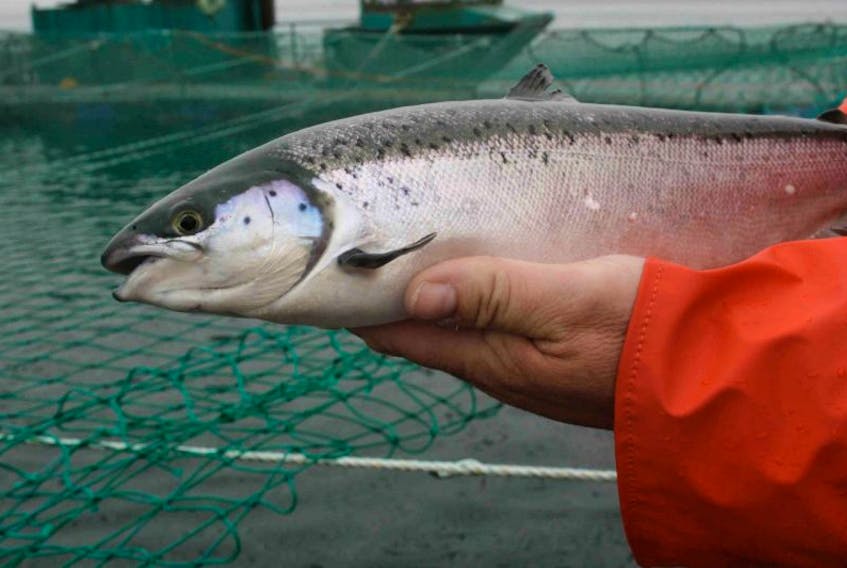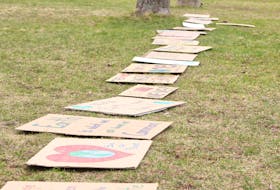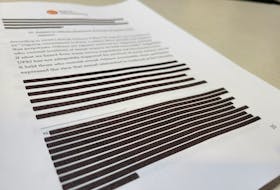Open netpen farming of Atlantic salmon started in Norway in the 1960s. It expanded into many other areas worldwide. In those areas with native wild salmon and sea trout the wild stocks have declined greatly or disappeared.
In Newfoundland this farming started in Bay d’Espoir in the late 1980s and expanded into Fortune Bay. The Department of Fisheries and Oceans’ recent stock assessments of wild Atlantic salmon in this area concluded they are critically low. The two major salmon rivers there, the Conne and the Garnish, had angled catches in the 1970s and 1980s of over 1,000 salmon per year in each river. Their runs are so small now that some years fishing is not allowed on the Conne and the Garnish catch is pitiful.
Salmon stocks have declined worldwide but generally nowhere near as drastically as where the salmon farming is practised.
Related story:
Final guidelines for Grieg NL’s environmental impact statement approved
Grieg intends to use similar technology in Placentia Bay with netpens which supposedly prevent escapes, and using common lumpfish to control the sea lice on the salmon.
These pens still allow the exchange of sea lice, pesticides, diseases, antibiotics, and salmon shit with the marine environment.
The stock status of lumpfish in this area is listed by DFO as uncertain yet Grieg proposes to use huge numbers of them to control sea lice. Where are they coming from? Lumpfish also get disease when kept in cages.
Sea lice have developed an immunity worldwide to pesticides used to kill them so that method is failing. Wild salmon smolts migrate east past the netpens in Placentia Bay on the way to ocean feeding grounds in the north Atlantic and are at risk of being covered with enough sea lice from the netpens to kill them. This effect has already been verified in Norway and British Columbia.
The sea trout stay in the bays for their marine feeding phase so they will be threatened all year.
In Ireland a thriving recreational sea-run brown trout fishery was present until the salmon farms came there in the 1980s. That fishery crashed as those stocks plummeted.
Other inshore stocks such as lobster, herring, etc. in Placentia Bay are surely at risk for negative effects from the farms.
The aquaculture industry has said:
1) There will be few salmon escapes in future. Fact: large escapes still occur worldwide.
2) The farmed salmon are sterile and cannot breed with wild fish. Fact: The DFO did their own study of the genetics of juvenile salmon in Fortune Bay and Bay d’Espoir rivers recently and found about 25 per cent of young salmon in 17 out of 18 rivers there had mixed wild and farmed salmon parents.
3) They will control the sea lice without use of pesticides. Fact: The sea lice outbreaks are increasing worldwide as the pesticides fail. A fish species called wrasse is sometimes used in Europe to control sea lice in the netpens. Their stocks are declining because of the fishery supplying the aquaculture industry. This industry has repeatedly downplayed its negative effects while exaggerating its positive effects. With $45 million of taxpayers’ money, plus much lower fees for the right to farm here than in Norway, who could blame Grieg for leaping at this gift.
The Newfoundland government admitted they had more public concern and feedback about this project than almost any other.
So then they decided to ignore this public concern about this massive project by not requiring an environmental impact statement (EIS). If the Atlantic Salmon Federation had not taken them to court to follow their own rules no EIS would have been done.
When any government partners with large multi-national private corporations promising jobs and profits rarely does anything good result in the long run for the general public and wildlife in general. While small compared to the Muskrat Falls project, it still has the appearance of another boondoggle using Newfoundlanders’ own money against all common sense.
If we farm salmon here, it should be using closed containment systems, which are much more environmentally friendly and which is where the salmon aquaculture industry elsewhere in the world is heading anyway.
David Downton
C.B.S.









